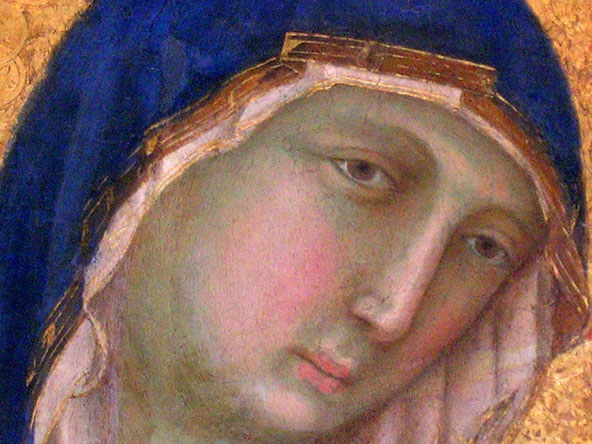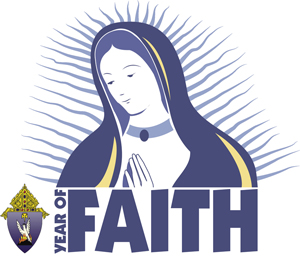
Although Mary is honored with countless titles, none is grander than, “Mary, Mother of God.”
The Catholic Church views the Blessed Mother with such reverence that the octave of Christmas, Jan. 1, is a holy day of obligation. The feast day reminds us of the role she had in the plan of salvation, which began with her simple answer of, “yes,” to God.
Mary’s fiat can be found in Luke 1:38, “Behold, I am the handmaid of the Lord. May it be done to me according to your word.” Biblical scholars refer to Mary’s answer to the angel as her, “fiat,” because that is the Latin word for, “be it done,” or “let it be done.”
Mary’s fiat is her willingness to submit herself fully to the will of God so that He could restore humanity into communion with Himself.
Larry Fraher, director of catechetical ministries at Blessed Sacrament Parish in Scottsdale, said it’s important to note that the doctrine of Mary developed from the doctrine of Jesus; how we get to Christ’s divinity is by understanding who Mary is.
“In others words, how we perceive Christ fully human and fully divine [dictates] how we must understand Mary as His mother,” Fraher said.

“Essentially, then, we have to say as Catholic Christians the pure God isn’t going to come to us through an impure human being. Mary’s purity is essential to be the one to present Christ to all humanity.”
God came to earth through the family, more specifically, by being born of a human woman. The doctrine of our faith tells us God became man without losing His divinity, and the Church confesses that Mary is the Mother of God.
One of the earliest titles given by Christians to the Blessed Virgin is Theotokos, which means, “God-bearer.”
The Catechism says, “Mary, the all-holy ever-virgin Mother of God, is the masterwork of the mission of the Son and the Spirit in the fullness of time. For the first time in the plan of salvation and because His Spirit had prepared her, the Father found the dwelling place where His Son and His Spirit could dwell among men. In this sense the Church’s tradition has often read the most beautiful texts on wisdom in relation to Mary. Mary is acclaimed and represented in the liturgy as the ‘Seat of Wisdom.’” (§721)
Trent Horn, staff apologist for Catholic Answers based in San Diego, said our salvation centers around Jesus Christ, the God-man becoming flesh and dying for the sins of the world. Still, many heresies have claimed that Jesus was not truly God and thus God did not become incarnate for mankind.
“The heretic Nestorius claimed that Mary was merely the mother of the ‘Christ’ or the ‘Christokos,’ but this view was deemed heretical at the Council of Ephesus in 431,” Horn said. “Mary was not the mother of a man who later became divine, but she was instead the mother of one of the persons of the Trinity.”
The catechism states, “In fact, the One whom she conceived as man by the Holy Spirit, who truly became her Son according to the flesh, was none other than the Father’s eternal Son, the second person of the Holy Trinity” (§495).
Mary, the first and most perfect disciple, is a model of love and service for us all, but it can be difficult to say, “Yes,” to God on a constant and daily basis due to fear and sinfulness.
Fraher said the afterglow of the Christmas season leaves behind “warm fuzzies” of baby Jesus in the arms of His mother.
“But if one pays close attention to the images, the person will notice the similarities in both form and substance to the Pieta,” he said. “Mary is embracing the babe of Bethlehem and the man of Golgotha.”
How do we follow the example of Mary to submit fully to God in the joys and sorrows of our own lives?
Fraher said it’s important to create space to be filled by God, make prayer time meaningful and not mechanical and emulate Mary by sharing the love of God with the world; through friendships, work-related encounters and with family.
Horn said Mary is an exceptional model of faith for all believers.
“We should remember in Mary that our greatness comes not in our accomplishments, but our willingness to say, ‘yes’ to God, in both large matters, and the innumerable small ones.”
“Our Faith” is a special Year of Faith feature that seeks to clarify often misunderstood Catholic teachings.






